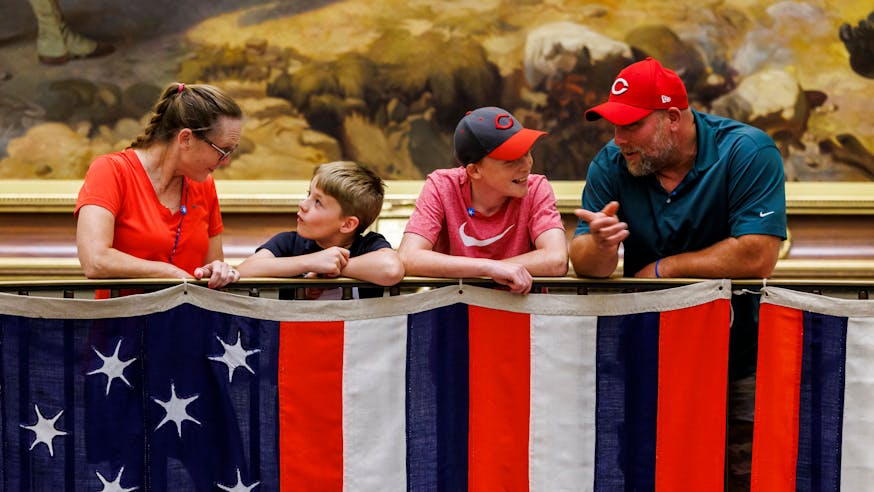Washington Standard Project
Washington Standard Project Progress Update
Summer 2023
The yarns have been woven. The silk has been dyed. Now under construction, let’s take a peek at the progress made on our Washington Standard Project to recreate General George Washington’s headquarters flag, which is part of the Museum’s collection and is said to have marked his presence during the Revolutionary War.
Weaving the Silk
The woven silk fabric of Washington’s personal flag, his Standard, probably came to the American colonies from England or France, perhaps China. For thousands of years, people in Asia had been raising and harvesting silk, formed as cocoons by silkworms, and exporting it around the world. In early America, people could buy all sorts of imported silks, including both finished fabric and raw yarns for weaving, and some people even experimented with raising silkworms here, though with limited success.
For our Washington Standard Project, our work began with textile artist and weaver Bettes Silver-Schack in King of Prussia, Pennsylvania. Silver-Schack sourced fine silk yarns to weave a fabric that mimics that of the original Standard. Even with our modern supply chains, however, it can be difficult to find certain products. In our case, for example, we acquired very fine (thin) silk yarn, but it was still larger than the original Standard’s yarn. Extremely fine yarn is only sold in large quantities for industrial purposes, and we only needed a relatively small amount.
Silver-Shack then “warped” a loom with the proper number of yarns to create a finished length of plain-weave (one over/one under) fabric as wide as the original flag. Washington’s Standard, like many 18th-century flags, incorporated finished “selvedge” edges, the edges of woven fabric, so that the maker could save the steps needed to hem a cut edge on the top and bottom edges of the flag. Silver-Schack used a hand loom, with no mechanical power, to weave several yards of finished fabric.

Dyeing the Fabric
Once woven, our silk fabric was white, the same color as the yarns. Silk, like most fabrics, can either be dyed as yarns or dyed after the fabric is woven. In our case, we wanted to replicate the historical technique that would have been most likely used on the silk of Washington’s Standard. One of the most common blue dyes of the 18th century was derived from the leaves of a plant called indigo.
To dye our silk cloth, we worked with Rowland Ricketts, an artist and indigo farmer and dyer in Bloomington, Indiana. Ricketts apprenticed in Japan and uses indigo that he derives from plants he grows from seed. This product is combined with water and wood ash to create an alkaline solution. Yarns and fabric dipped into this solution react with oxygen when removed into the open air. Ricketts produced a variety of experimental “dips” of samples of the white silk until we determined the best process to achieve the desired blue shade.
Washington’s original flag is quite faded, and we used a variety of evidence, including contemporaneous paintings that show Washington with other flags, to debate and decide what color the flag might have been when new. The final piece of blue silk we selected to create our replica had actually shrunken slightly during dyeing, so the replica will be slightly smaller than the original Standard.
Behind-the-Scenes: Dyeing the Silk
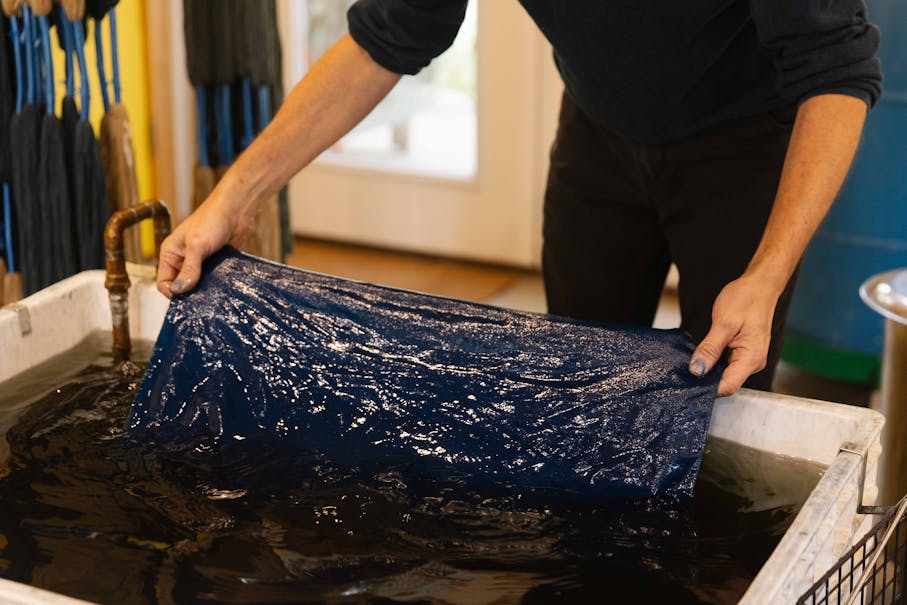
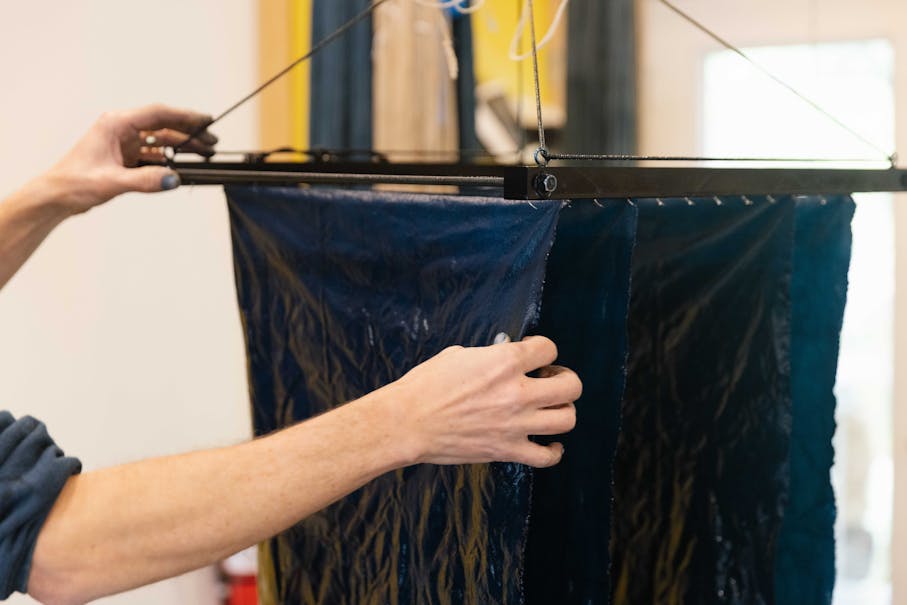
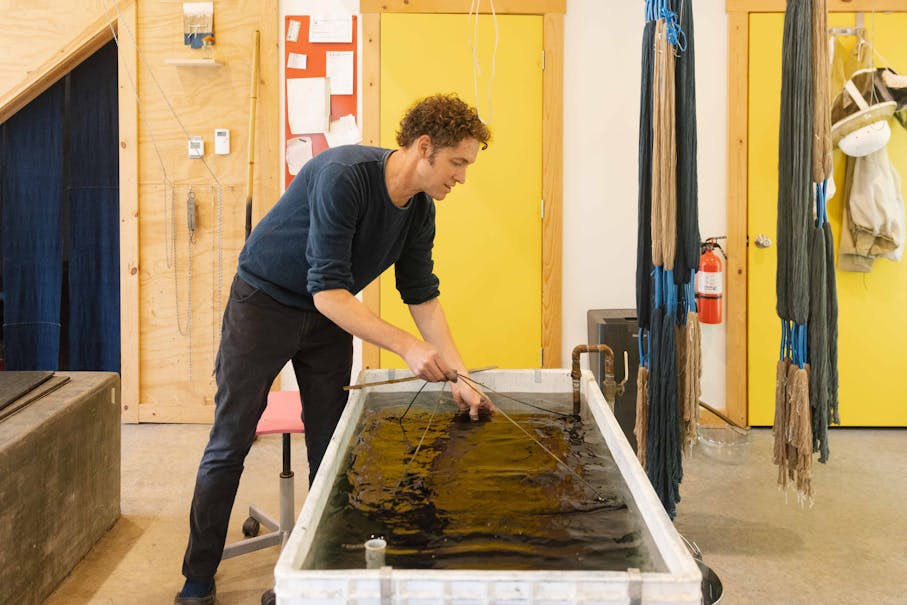
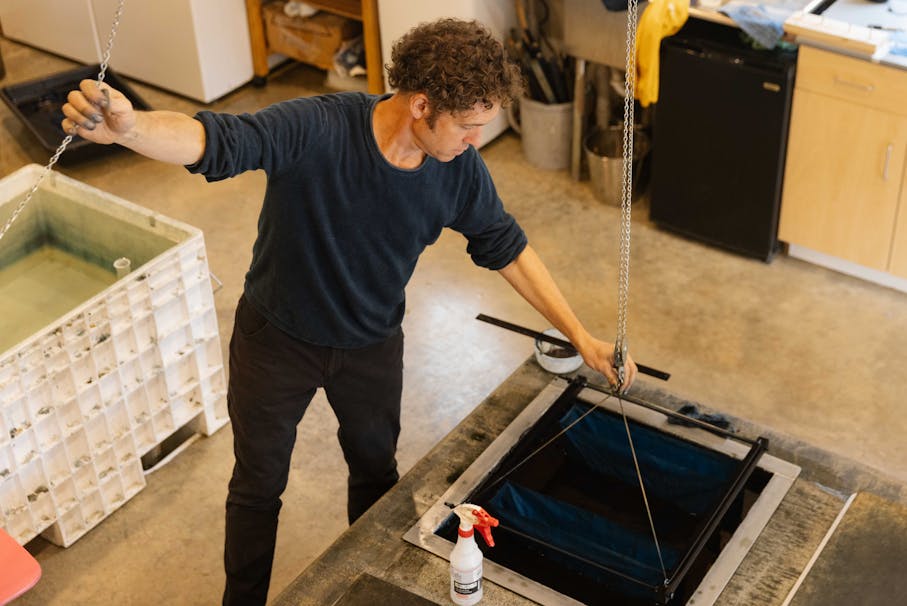
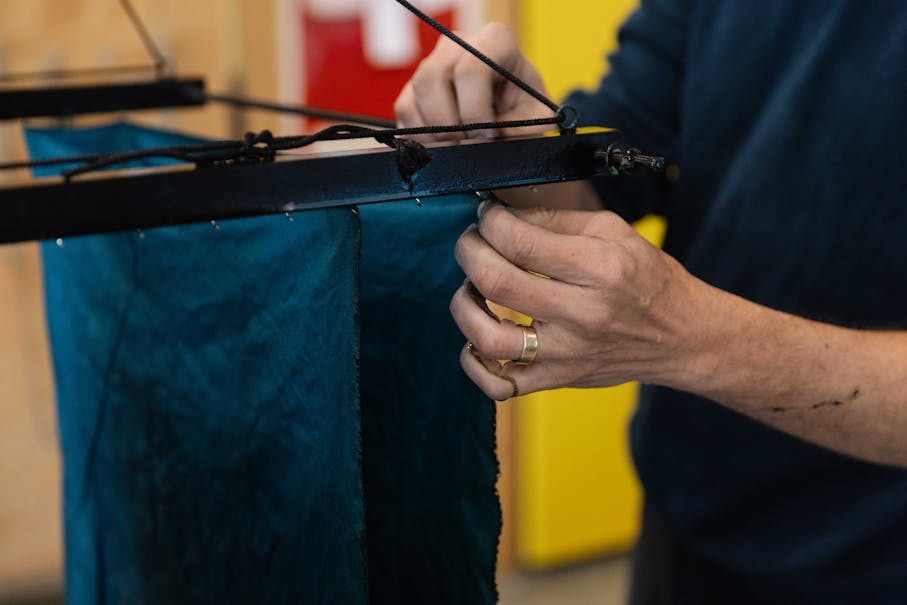
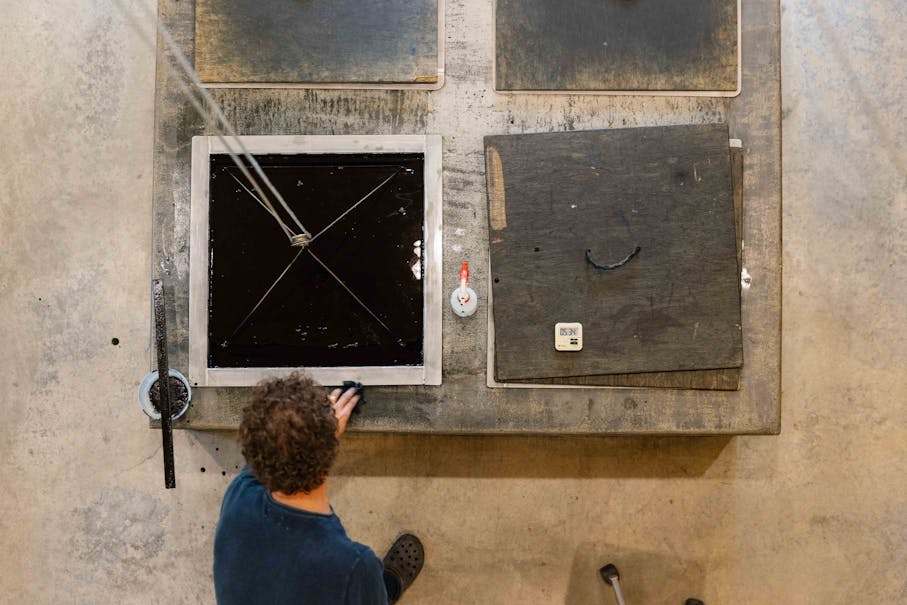
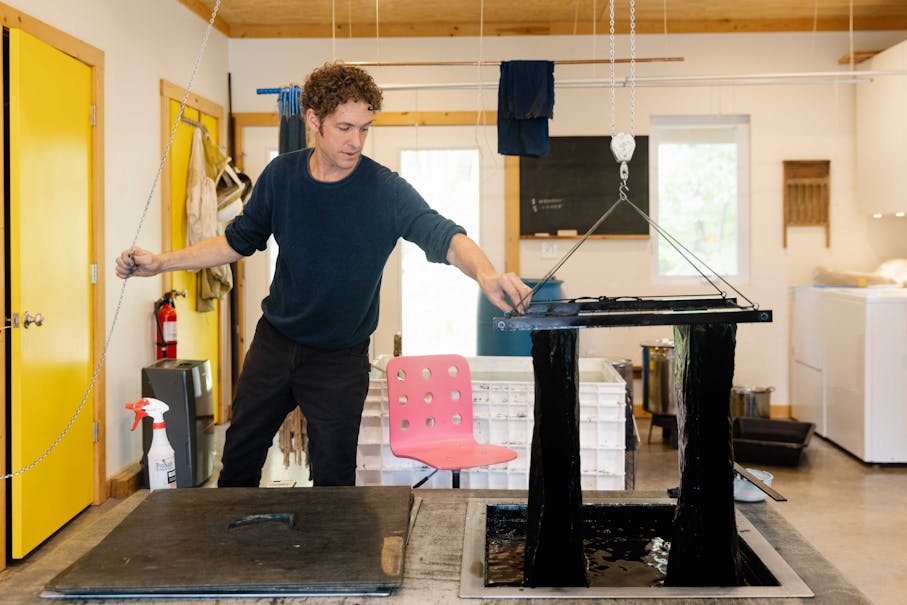
Final Step: Construction
The final part of this process is construction, which is currently being conducted by textile conservator Gina Whelan of Merion Station, Pennsylvania. Whelan worked on the conservation of George Washington’s War Tent and the original Standard, both of which are in the collection of the Museum. Whelan studied the original Standard to better understand its creation techniques and construction. With the blue silk in hand, Whelan will now add a linen “hoist” along one edge, which would have been used to attach the flag to a staff, and sew on the 13 white, six-pointed silk stars. These stars are appliqued (sewn along the edges) to one side of the fabric, and then the original maker turned the flag over, cut out the inside shape of the star on the other side, and carefully turned and stitched sewed the blue fabric down on that side, revealing the back of the white star.
We do not know who made Washington’s Standard or why they chose its color, design, or star shape. It’s easy to see its connection to the new flag of the United States, but no evidence survives to tell us whether one inspired the other. Our replica Standard gives us a chance to imagine the process and people that made this flag.
Learn More
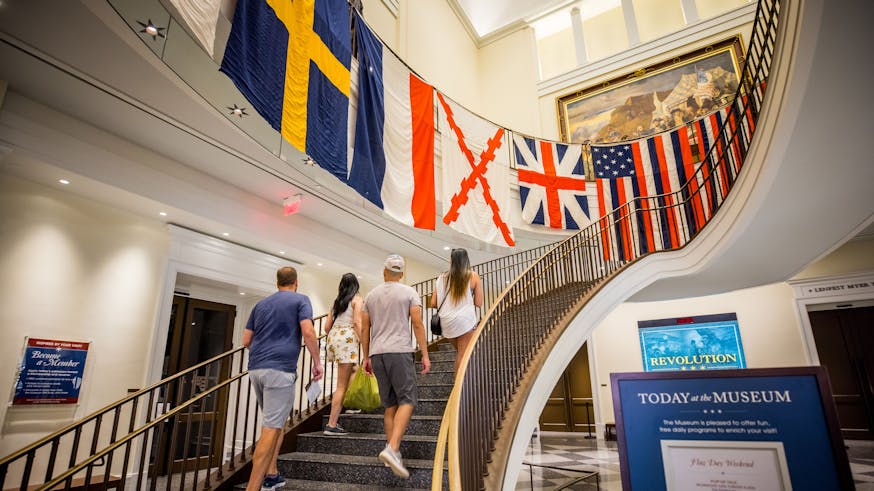
Flag Day 2023 at the Museum
June 14, 2023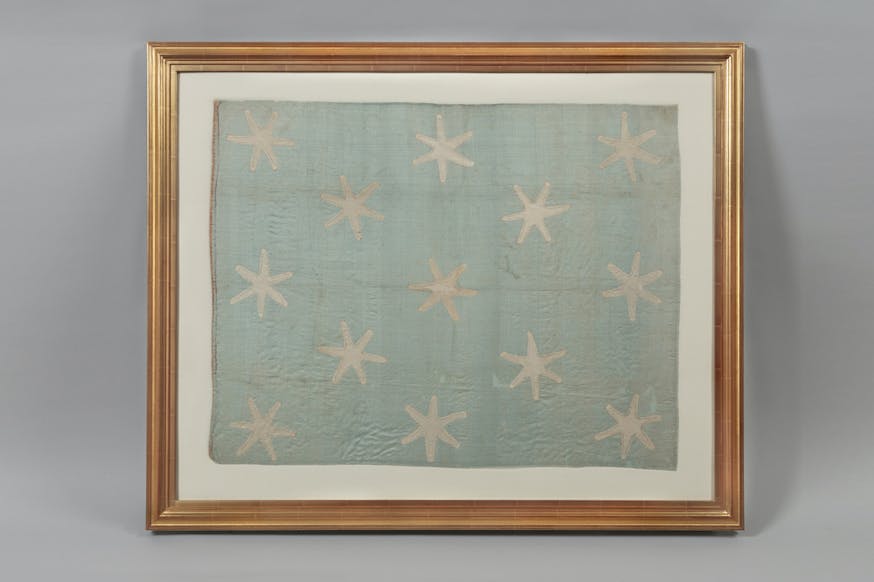
An Introduction to the Washington Standard Project
